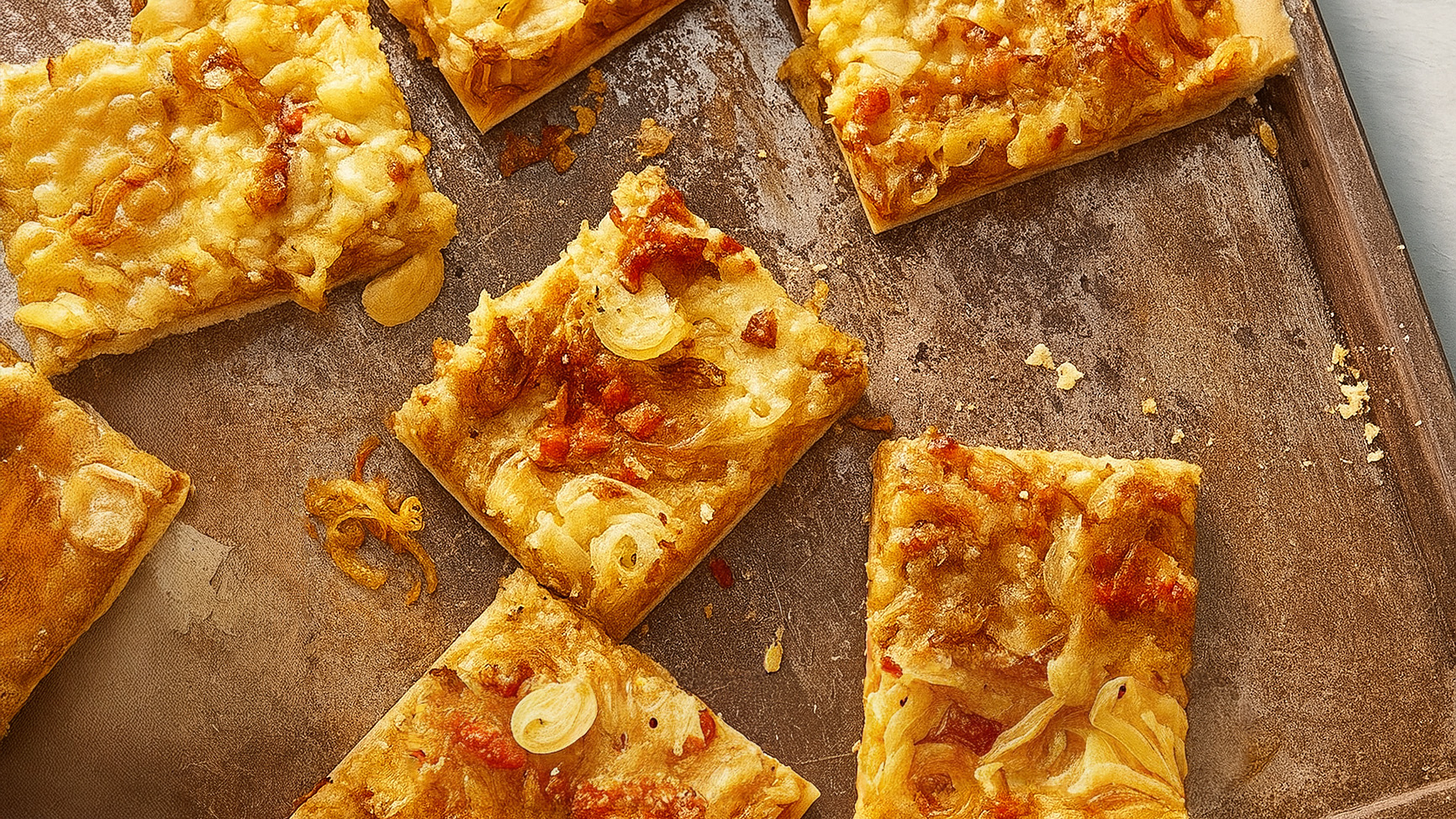Covrigi: Romania’s Twisted, Toasted Street Snack
Romania has given the world many things. Gymnastics legends, haunted castles, unpronounceable surnames, and perhaps most importantly for the carbohydrate-inclined, covrigi. If you’ve never heard of covrigi, imagine a pretzel that took a gap year, got a suntan, and came back with a taste for poppy seeds. Yes, it’s a pretzel, but it decided to go Balkan.
Covrigi (singular: covrig) are found in bakeries, kiosks, and small holes-in-the-wall throughout Romanian towns and cities. They are the kind of snack you grab when you’re too broke for a meal but too proud for another packet of crisps. They’re cheap, portable, satisfyingly chewy, and salty enough to wake the dead. Some say the best covrigi come from Buzău, a city that’s basically the Vatican of pretzel worship.
Covrigi’s roots are predictably disputed. Some say they were brought to the region by German settlers, others by the Greeks. There are even murmurs of Turkish influence, which makes sense if you’ve ever tried simit in Istanbul and thought, “This tastes suspiciously Romanian.” Like many Eastern European food stories, the origins are a melting pot of invasion, trade, and a desperate need to make bread more exciting.
Unlike their doughy American cousins drenched in neon cheese sauce, covrigi keep it elegant and restrained. Classic toppings include coarse salt, poppy seeds, sesame seeds, and sometimes none at all, just a glossy, golden brown crust that’s as photogenic as it is addictive. You bite into one and you get that perfect tension: a crackle, a tear, a stretch.
There are regional varieties, of course. In Buzău, you might get covrigi that are fluffier and richer, thanks to a splash of milk in the dough. In Transylvania, the Germanic roots shine through with tighter twists and a heartier bite. Some bakers sneak in fillings: cheese, jam, even bits of sausage. But purists will insist these are abominations and should be called something else entirely. Possibly blasphemy.
What makes covrigi special isn’t some rare spice or guarded family recipe. It’s the ritual. The everydayness. The way every street has at least one vendor with a window fogged from baking frenzy. The way office workers, schoolkids, and pensioners queue up together, clutching coins, praying the poppy seed ones haven’t run out. The way the smell seeps into your coat, reminding you three hours later that you should’ve bought two.
They pair marvellously with street life. If you find yourself in Bucharest or Cluj, try eating one while walking over cobblestones, dodging pigeons, and ignoring the ghost of Ceaușescu. It’s a full-body experience. For drinks, anything goes. Coffee if it’s morning. Kvass if you’re feeling rustic. Cheap beer if the day’s gone sideways. Or mineral water from a plastic bottle so fizzy it bites back.
Food-wise, covrigi don’t need much company. Maybe a lump of cheese. Maybe a dollop of plum jam if you’re adventurous. But really, they shine best alone, like a solo act that never needed a band. They’re the Bruce Springsteen of baked goods.
From a health perspective, they’re not the devil. Made from basic dough, they’re lower in fat than most pastries, and the toppings aren’t exactly indulgent. Poppy seeds bring a bit of calcium and magnesium. Just don’t eat twelve. Or do. It’s your holiday.
You’ll find covrigi everywhere in Romania. Look for words like “Covrigărie” or just follow your nose. Train stations are particularly good covrig-hunting grounds, as are markets and university neighbourhoods. The price? Usually less than a euro. The satisfaction? Priceless.
Feeling inspired to bake your own? Here’s a homely recipe that’ll make your kitchen smell like a Romanian street corner.
Covrigi Recipe (makes 8):
You’ll need:
- 500g plain flour
- 7g dry yeast
- 250ml lukewarm water
- 1 tsp sugar
- 1 tsp salt
- 2 tbsp vegetable oil
- 1 tbsp baking soda (for poaching)
- Toppings: coarse salt, poppy seeds, sesame seeds
Mix yeast, sugar and water. Let it bubble for 10 minutes. Add flour, salt and oil. Knead until the dough is smooth and springy. Let it rise until doubled (around an hour, unless your kitchen is a meat locker).
Divide into 8 balls, roll each into a rope, and twist into that iconic pretzel shape. Bring a pot of water to a boil, add baking soda, and poach each covrig for about 30 seconds. Drain, place on a baking tray, sprinkle toppings, and bake at 220°C for 15-20 minutes until bronzed and beautiful.
Eat warm. Share with no one. Unless you really, really love them.




1 comment